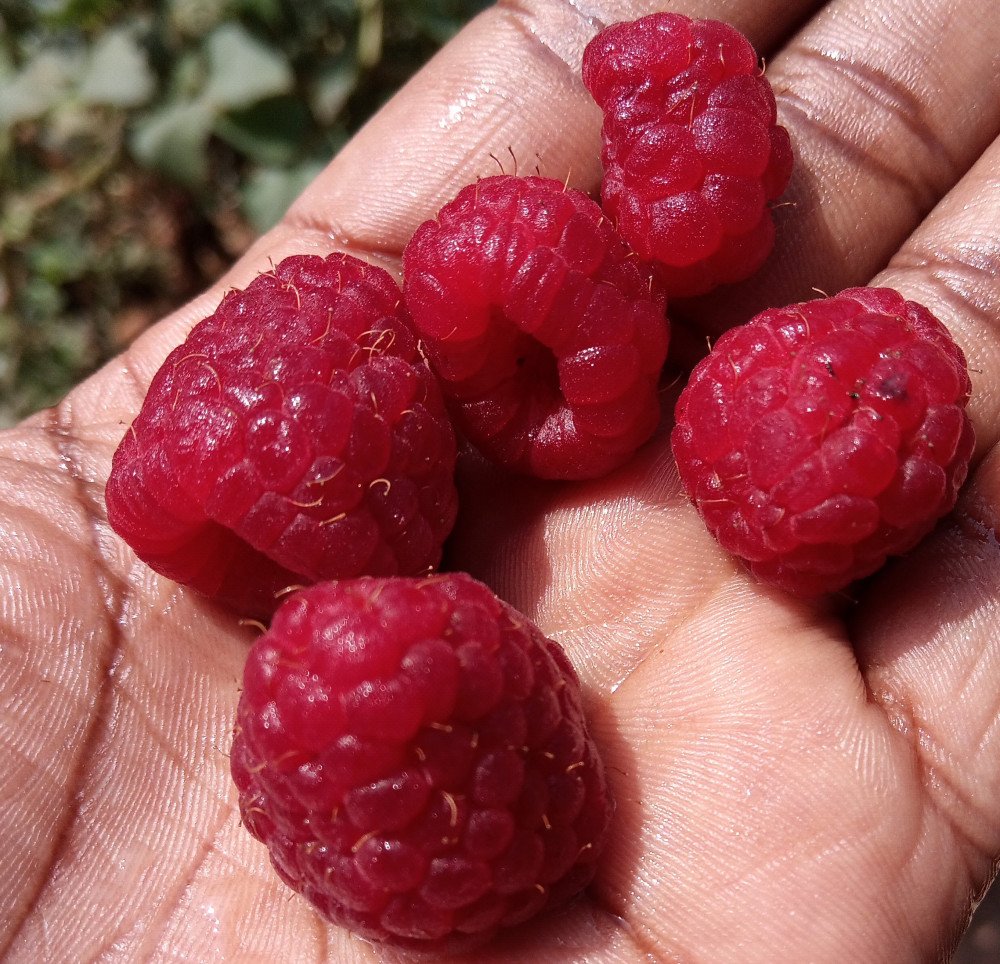I love using Raspberries, Rasiberi as they are known in Swahili, in my smoothies and I have to admit that at first it was because they gave them (smoothies) a really palatable color, however, I learnt that they really are an important commercial fruit crop.
Though a native to Europe and Asia, they are widely grown in all temperate regions of the world. This fruit should definitely be one of your snack time favorite. The wild species is a forest pioneer plant, meaning, it grows in forest clearings, but also on the edges of forests and on rubble sites.
A raspberry bush can yield several hundred berries a year and are characterized as having a hollow core once it is removed from the receptacle. An individual raspberry weighs 3–5 g, and is made up of around 100 drupelets, each of which consists of a juicy pulp and a single central seed.
The raspberry was cultivated around four hundred years ago, though it’s popularity in food and medicinal uses have continued since ancient times, when its juice was also used as a red stain in art work. It was to be found in large numbers in medieval monastery gardens.
The cultivars of the garden raspberry were bred by crossing a European with an American subspecies. Nowadays, various cultivars and American species (R. spectabilis and Rubus strigosus) are grown, which are also released into the wild.
Raspberries come in hundreds of varieties, and each of the Raspberries varieties is distinctive in color, size, flavor, and nutritional composition. There are five basic types:
Red and yellow raspberries: They both are extremely sweet to eat raw, with the only difference being their color. However you can use them as a great ingredient in jams, jellies, pies and tarts.
Black raspberries: While you can enjoy black raspberries fresh, most commercially grown black raspberries are used in specialty foods such as jams and purées or used to make products like dietary supplements and natural food coloring.
Purple raspberries: They are a larger size berry than other raspberry variety. Purple raspberries have a typical raspberry shape and a similar raspberry flavor, but due to their higher sugar content, they are sweeter than red varieties. Purple raspberries will perfectly complement fruit salads, cakes and tarts. The higher sugar content of the purple variety is perfect for jams and jellies
Ever bearing Raspberry: Different for its flavor, firmness, and large fruit size. This variety can be consumed fresh, canned or frozen.
It’s important to note that, most raspberries keep their original colors all through processing.
Raspberries have many uses. In naturopathy, fruits, leaves, flowers and roots are used. The raspberry leaves are used in traditional medicine, because of their tannin content as a tea for mild diarrheal diseases, to gargle for inflammation in the mouth and throat, and more rarely for washing with chronic skin diseases.
The syrup is used to improve the taste and color of medicines, and since ancient times, it has been given (diluted) as a thirst-quenching drink for people with a fever.
Raspberries are a rich source of flavonoids quercetin and gallic acid, which play a role in heart health and the prevention of cardiovascular disease, obesity and age-related diseases.Raspberries are also high in fiber and Vitamin C.



Add your reply
Replies